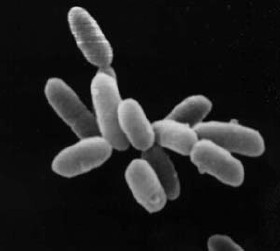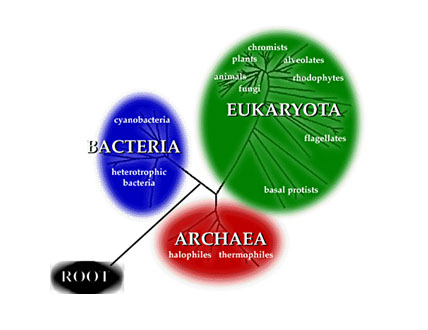|
Halobacterium salinarium is a salt-loving member of the Achaean domain. This domain, which possesses many characteristics similar those of Eukaryotes, is mainly composed of extremophiles (organisms adapted to live in very extreme environments), specifically thermophiles (heat-loving) and halophiles (salt-loving). Halobacteria are commonly found in hypersaline lakes, salted meats and fish, salterns, and other bodies of water with salinities 5-10 times that of the ocean.

Halobacteria are taxonomically similar to both bacteria and Eukaryotic organisms. Like bacteria, they have gas vesicles, a flagella, and a cell wall, but they also have DNA, genetic processes, and some cell structures that are characteristic of eukaryotes. To diminish osmotic stress caused by the difference in salinity between the Halo and its environs, the bacteria are equipped with osmoprotectants that help keep the cell stable. Without these osmoprotectants, the Halo would be unable to pump salt into its cell and therefore would be unable to survive in its incredibly salty environment. However, the osmoprotectants also pose a problem for Halo; if they are exposed to low-molarity water, osmosis causes water flood the Halo cell and their membrane lygazes. Halobacteria get their purple-reddish color from bacteriorhodopsin, a protein found in their membrane that resembles that of the human eye. This protein acts as a proton pump to capture light energy and turn it into usable chemical energy. These single celled, rod-shaped microorganisms are the only photoautotrophic archaeons.
Halobacteria are ideal for study in the lab because of their similarities to Eukaryotes and their simple DNA which allows for easier manipulation. In addition, Halo are easy to culture and are less susceptible to contamination due to their high saline environment. Furthermore, the entire genome of Halabacteria has been sequenced so their gene expression can be studied in greater depth than that of other organisms.
 |



